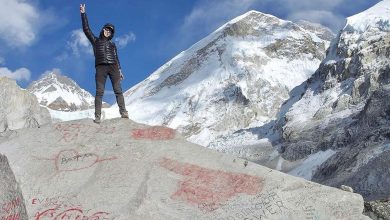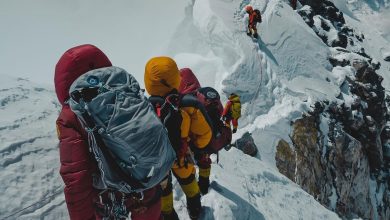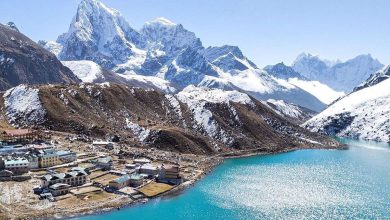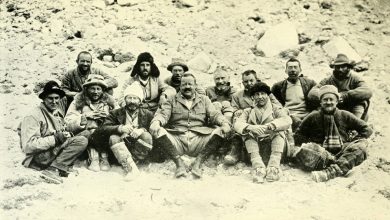David Sharp : Everest Climb Without Oxygen Supplements
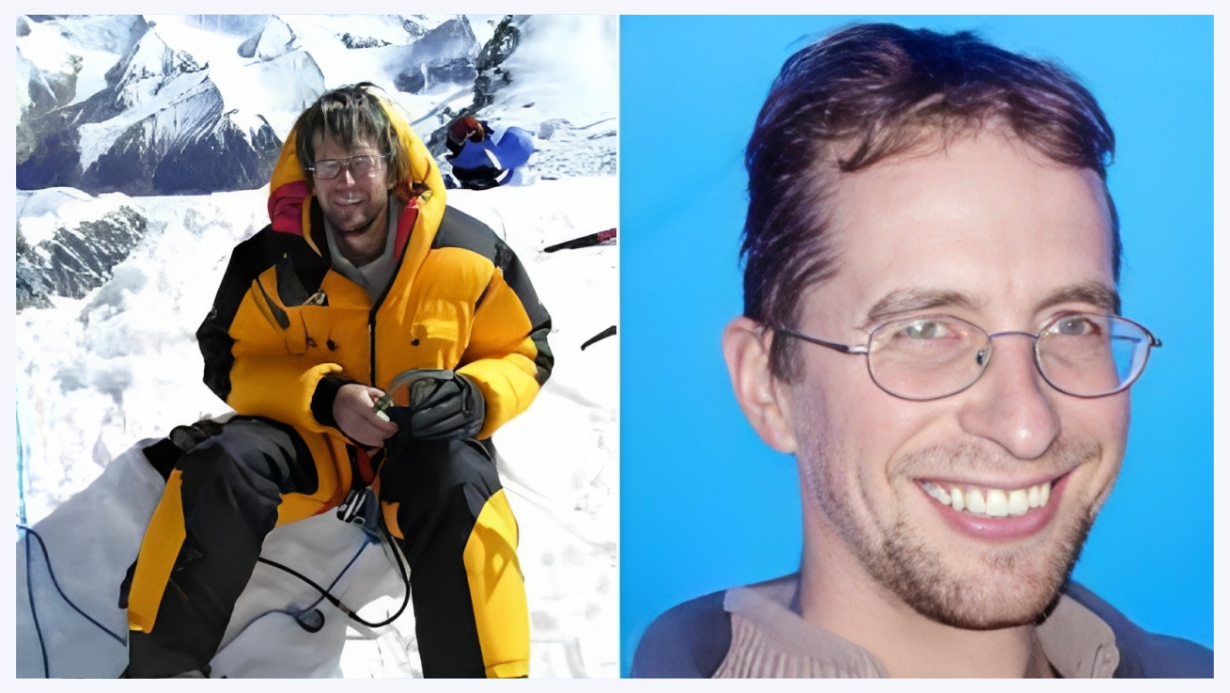
Climbing Mount Everest has been a trending story in the mountaineering industry. However, climbers must acknowledge that climbing Everest has significant risks and dangers. Several bodies still lie on Everest after years of dying. Bodies of many famous climbers such as George Mallory, Rob Hall, Scott Fischer, Andrew Irwine, Peter Boardman, and Francys Arsentiev lie on Everest. One of them is David Sharp, a British Mountaineer who died trying to scale up Mount Everest alone and without any oxygen supplements.
Sharp briefly starred in the Television Show called ‘Everest: Beyond The Limit’ for one season. He did not believe in seeking support from the guides and oxygen supplements in an expedition to the known peaks. However, this cost him his life as he died while attempting to scale Everest alone without any oxygen supplements.
Having a passion for mountaineering from a young age, Sharp was brilliant in rock climbing skills. This led him successfully conquer the highest peak in Africa and Europe, Mount Kilimanjaro and Mount Elbrus, respectively. Similarly, he already had the taste of the Himalayas, including his failed expedition to Gaserbrum II in 2001 and Mount Everest in 2003 and 2004. Among the notable accolades of David Sharp’s mountaineering career was the successful climb to Cho Oyu (8,201 meters), which he climbed in 2002. Sharp was considered a strong mountaineer, having technical skills in mountain climbing and rock climbing. However, the extreme weather condition led him to suffer from Hypothermia, or celebral edema took his life at the young age of 34.
In this blog, we will discuss Sharp’s early life and family details with the details of his mountaineering career. Also, let’s explore what his death cause was and the controversies that followed after his tragic demise.
Who Is David Sharp? Short Bio and Early Life
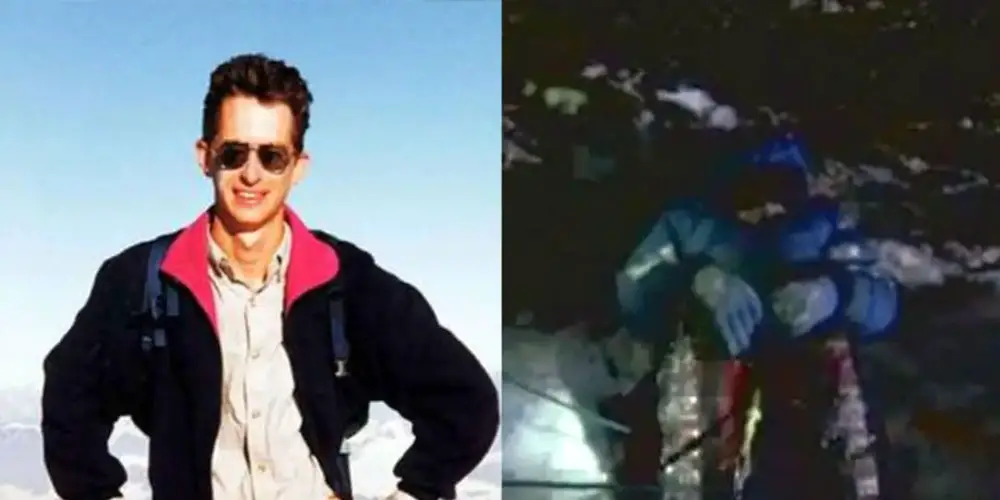
David Sharp is a late British Mountaineer known for his fateful demise on Everest. His death became one of the most controversial events in the mountaineering industry since he died trying to climb Mount Everest, and in the process, many climbers en route to the summit encountered him. Though many tried to help and save him, he eventually lost his life near the Everest Summit.
David Sharp was 34 when he died on Everest. He was born in Harpenden, near London in England, on 15 February 1972. He was one of the children of Linda Sharp and John Sharp, who hailed from Guisborough, east Cleveland. Sharp was an alum of Prior Pursglove College and the University of Nottingham, from where he graduated with a degree in Mechanical Engineering in 1993.
After completing his degree, Sharp started working at a global security company called QinetiQ. He worked there for over a decade before he dropped the job and pursued teacher training in 2005. In the meantime, he planned his career in teaching and had sorted out to start teaching in 2006. By then, Sharp had already had been in several mountain expeditions, such as the Gasherbrum II expedition in 2001, the Cho Oyu expedition in 2002, and the first and second Mount Everest Expedition in 2003 and 2004.
David Sharp’s Mountaineering Career
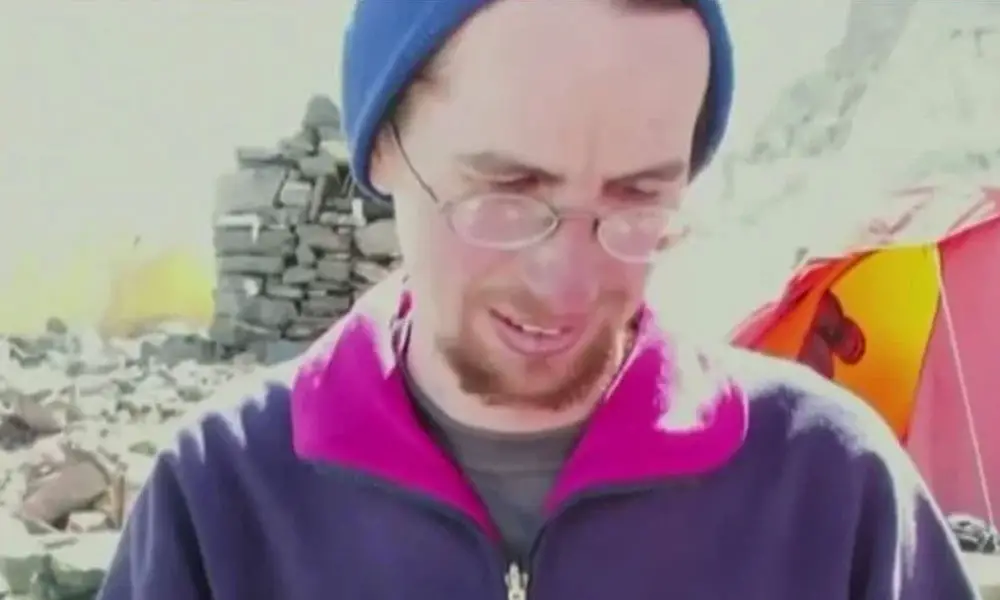
David Sharp always had a passion for mountaineering since a young age. Following his passion, he got enrolled in Mountaineering Club during his academic years at the University. During that time, Sharp had already climbed Roseberry Topping in North Yorkshire, England. At the same time, he went on a six-month sabbatical from his job and went on backpacking trips to South America and Asia.
After such accolades, David Sharp had his eyes on the Himalayas in Nepal. So to start his campaign, he began climbing Gasherbrum II in the Karakoram Mountain Range in Pakistan in 2001. He started his expedition to Gasherbrum II 8,035 m (26,362 ft) with Tod Hill. However, they could not reach the top of the peak due to extreme weather conditions. They eventually returned empty-handed during this expedition. Sharp never returned to the Karakoram Mountain Range to try his luck after this expedition.
A year later, David Sharp rolled out for another peak climbing expedition in 2002. This time, he chose the easiest 8000er mountain Cho Oyu in Nepal. Richard Dougan and Jamie McGuinness of the Himalayan Project led the expedition to Cho Oyu 8,201 meters (26,906 ft) in 2002. The expedition team successfully reached the top of Mount Cho Oyu. One crew from their expedition team tragically died after falling into a crevasse while descending from the peak. This opened a portal for David Sharp to climb Mount Everest.
The following year in 2003, David Sharp began his first mountain expedition to the highest peak in the world, Mount Everest. A fellow British climber Richard Dougan led the expedition to Everest (8,848 meters). Alongside, Sharp and Dougan, Terence Bannon, Martin Duggan, Stephen Synnott, and Jamie McGuinness also joined the party. Out of them, only Bannon and McGuinness conquered Mount Everest, while the rest of the crew members returned without summit relish. Sharp was one of the strongest climbers on the team; however, he could not conquer Mount Everest. Reports mentioned that he had acclimatized well, and everyone praised his rock climbing skills. But during the ending phase of the expedition, he started getting frostbite and returned to the lower camp. He and his team even helped a Spanish climber from there and gave him their oxygen supplements. David Sharp lost his toes due to frostbite in the 2003 Mount Everest Expedition.
David Sharp’s Second Attempt To Mount Everest
A year after tragically failing to reach the top of Mount Everest, David Sharp planned his next Everest Expedition in 2004. He was part of a Franco-Austrian expedition team who started their climb from the north side of Mount Everest. Sharp successfully reached 8,500 m (28,000 ft); however, he could not get involved in the Final Summit Push. He got physically exhausted due to extreme weather conditions and stopped near the First Step.
The 2004 Everest Expedition was led by Hugues d’Aubarede, a French professional climber who later died while scaling Mount K2 in 2008. Hugues became the 56th French climber to scale Mount Everest successfully. As per the late Hugues, he and Sharp were against the ideology of climbing Everest without oxygen cylinders and alone. Hugues believed a human life needed oxygen supplements and support from the Sherpas to scale mountains. However, Sharp did not believe his belief and was determined to conquer Everest without oxygen supplements. The 2004 Everest Expedition also cost him his fingers due to frostbite.
David Sharp’s Fateful Solo Expedition Without Oxygen Supplements in 2006
David Sharp was very confident about reaching the top of Everest this time. He always believed climbing Everest solo without oxygen supplements was possible. So to shatter all the speculations around him, he embarked on a Mount Everest Expedition in 2006, which marked his third attempt at the mountain.
It is said that Sharp assured his mother Linda Sharp, stating, ‘You are never on your own. There are climbers everywhere.’
David Sharp was no amateur in the mountaineering business. He had already climbed Mount Cho Oyu in 2002 and had been on the expedition campaign to Gasherbrum II and Mount Everest twice. He also climbed Elbrus and Kilimanjaro, the tallest peak in Europe and Africa, respectively. However, the failure of Mount Everest’s expedition twice before 2006 led him to try his luck for the third time. This time, he was all alone and without any oxygen bottles, but he was very determined to reach the top of the mountain.
David Sharp started climbing the peak from the base camp on May 13, 2006. Many suggested taking the oxygen support with him; however, being blinded by reaching the summit without it led him on a solo climb. Several climbing groups reported seeing tired Sharp at different points on Everest. But no one could verify if he reached the top successfully or not.
On the same day (May 14, 2006), Sharp started descending. However, he could not be seen anymore. But on May 15, a group of mountaineers found him in a limestone cave, where the famous Greenboot lies dead. They mentioned that they reached the “Green Boots” region, and when they peeked inside the cave, they saw Sharp resting there. They mentioned that Sharp was sitting with his arms wrapped around his knees. Seeing this, they thought Sharp had already gone to come, but no one came forward to bring him down to the lower altitude. He was left alone backward without seeking any support from no one.
Another group discovered David Sharp twenty minutes later. This time the group called out for Sharp, who was still sitting in the infamous cave. Sharp did not utter a single word, but he waved them off. Besides them, around thirty-six climbers came and passed by David Sharp, of which some tried to speak with him. Later, their stories would stir the mountaineering industry, leading to several controversial debates about his death.
Among several mountaineers, one was Maxime Chaya, who discovered David Sharp when descending from the summit. Chaya and his team sat down and tried to talk with Sharp, only to find Sharp’s face turning black. They could not leave Sharp behind, so they prayed for his life until they were told to leave and not risk their own lives. They did radio messages to Base Camp, but they could not get any support due to the extreme weather.
How Did David Sharp Die on Everest?
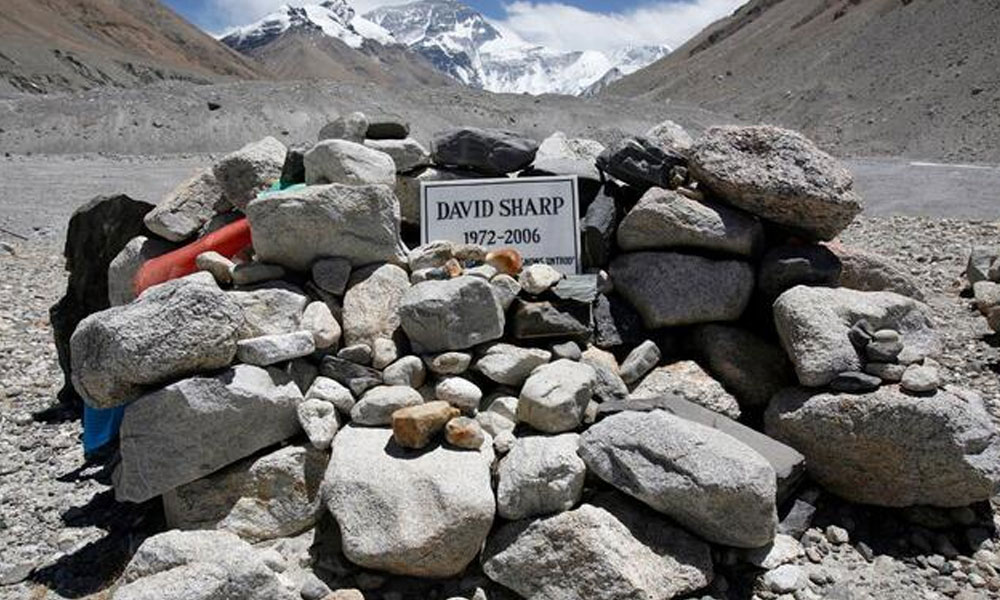
David Sharp’s death on Everest is no strange story in the mountaineering industry. He was part of the 2003, 2004, and 2006 expeditions to the world’s tallest peak. However, he sadly lost his life at the final summit, but the details about whether he reached the top of the peak remain in mystery.
David Sharp’s death was directly connected to the bad weather condition, which led him to suffer from Hypothermia or cerebral edema. Hypothermia is a type of altitude sickness which adversely affects your brain. It is usually caused by long exposure to high altitudes and very cold temperatures. In high-altitude destinations like Mount Everest, climbers suffer from this illness as the body loses heat quickly due to low temperatures. With less heat retention in the body, the brain is directly impacted by this, leading to cause Hypothermia or cerebral edema.
See also:
Controversies Filled The Media After David Sharp’s Death on Everest
David Sharp’s death on the third attempt on Everest brought a series of controversies in the media. The first thing was more than forty climbers encountered Sharp during their ascent; however, no one tried to help him, which questioned the existence of humanity. But it’s unclear whether he could potentially be saved or not. Reports cite that one of the climbers who discovered him reportedly gave him drugs or oxygen on the day he rested in the limestone cave.
The incident got mixed reactions from fellow mountaineers, including Sir Edmund Hillary. Hillary came into the frontline criticizing not helping to rescue Sharp. He mentioned that leaving climbers die in the Himalayas is unacceptable. He mentioned,
“I think the whole attitude towards climbing Mount Everest has become horrifying. The people just want to get to the top. It was wrong if there was a man suffering altitude problems and was huddled under a rock just to lift your hat, say good morning and pass on by.”
Similarly, he spoke with New Zealand Herald and rebelled against the other climbers who did not act to aid David Sharp. He mentioned that today’s commercial climbers don’t care for anyone though they know others are in trouble and distress. He said, ‘It doesn’t impress me at all that they leave someone lying under a rock to die.’ He cited, “I think that their priority was to get to the top and the welfare of one of the … of a member of another expedition was very secondary.”
Similarly, the professional mountaineer David Watson, who climbed Mount Everest from the North side, also criticized the incident. Speaking with the Washington Post, he said, ‘It’s too bad that none of the people who cared about David knew he was in trouble because the outcome would have been different.’ Watson said it was possible to help Sharp and also brought light to the rescue campaign launched by Sharp in 2004 to save a Mexican climber. However, he remained out of the rescue reach when he got into trouble on Everest.
On the other hand, Sharp’s mother, Linda Sharp, did not blame other climbers. Speaking with the Sunday Times, and said, ‘Your responsibility is to save yourself – not to try to save anybody else.’
